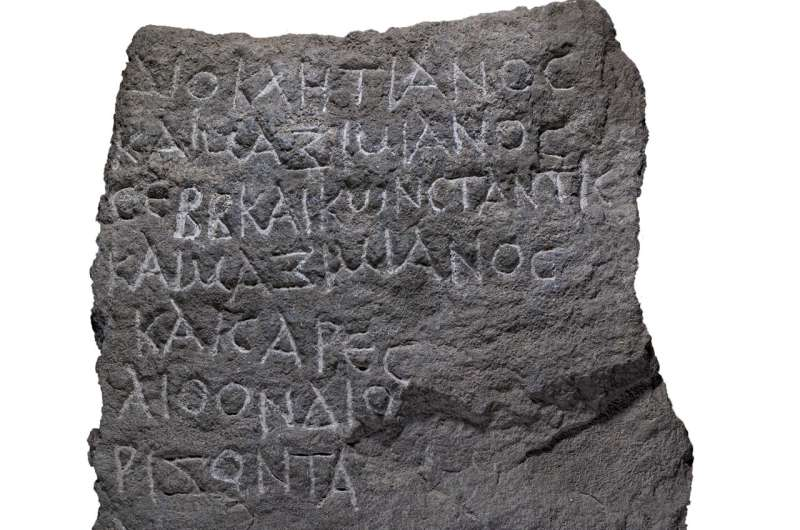Archaeologists have unearthed a remarkable relic of Roman imperial administration at Abel Beth Maacah in northern Israel. This boundary stone, dating back to the reign of Emperor Diocletian, sheds light on land ownership, settlement patterns, and taxation practices during a transformative period in Roman governance.
A Unique Discovery with Deep Historical Roots
The boundary stone, carved from basalt and etched with a detailed Greek inscription, was uncovered at the biblical site of Abel Beth Maacah near Metula, Israel. Originally used to mark agrarian borders under Diocletian’s tax reforms, the stone was later repurposed in a Mamluk-period installation.
This discovery, led by Professors Naama Yahalom-Mack, Nava Panitz-Cohen (Hebrew University), and Robert Mullins (Azusa Pacific University), offers a rare glimpse into the administrative strategies of the Roman Tetrarchy—a governance model introduced in 293 CE to divide the empire between two senior emperors (augusti) and their junior counterparts (caesares).
Deciphering the Past: New Names and New Insights
The inscription revealed two previously unknown place names, Tirthas and Golgol, potentially linked to sites identified in the 19th-century Survey of Western Palestine. Additionally, it mentions an imperial surveyor, or "censitor," whose name appears for the first time in the historical record.
“This discovery highlights the meticulous administrative restructuring during the Tetrarchy,” explains Prof. Uzi Leibner. “It connects us to the lives of individuals navigating complex systems of land ownership and taxation nearly 2,000 years ago.”
Dr. Avner Ecker adds, “The inclusion of new place names and a previously undocumented surveyor underscores how even modest findings can dramatically expand our understanding of the region’s socio-economic and geographic history.”
Context and Broader Implications
The boundary stone is part of a unique group of over 20 similar artifacts found in the northern Hula Valley. These stones reflect a period of increased administrative control, standardizing taxation and clarifying land ownership across rural settlements.
The high concentration of boundary stones in this area suggests a region dominated by small, independent landholders rather than large urban centers. This aligns with contemporaneous rabbinic traditions that describe the burdens of Diocletian’s tax reforms, shedding light on the economic pressures faced by local communities.
A Glimpse into Rural Life under Roman Rule
The stone provides tangible evidence of the interconnectedness of Roman imperial policies and the daily lives of rural populations. Diocletian’s sweeping reforms, aimed at stabilizing the empire’s economy, had profound effects on small landholders, revealing a balance of opportunity and hardship.
“This find enriches our understanding of the socio-economic dynamics during the Tetrarchy,” says Prof. Leibner. “It offers a rare glimpse into the enduring traces of communities that existed under Roman imperial rule.”
Expanding the Historical Narrative
This boundary stone stands as a testament to the administrative ingenuity of the Roman Empire and its impact on local populations in the Levant. By uncovering such artifacts, archaeologists continue to deepen our understanding of ancient systems of governance, economic policies, and the resilience of rural communities in the face of imperial reforms.
Through discoveries like this, the complex tapestry of Roman imperial administration and its legacy becomes ever more vivid, connecting us to the stories of those who lived nearly two millennia ago.







